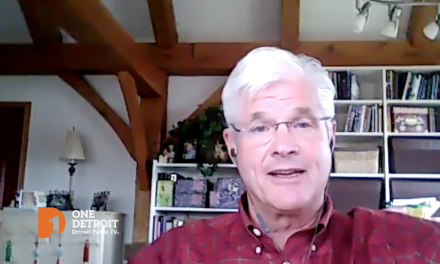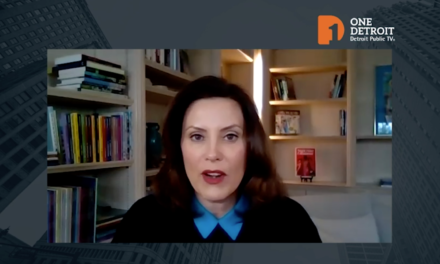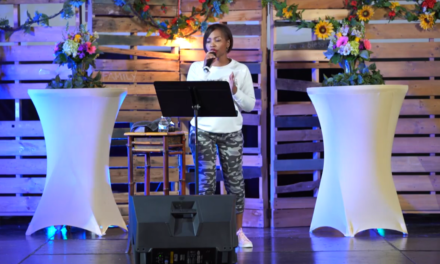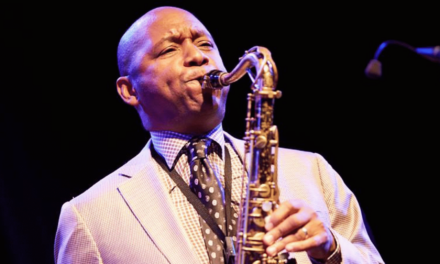Children certainly have gone through a lot since the COVID-19 pandemic started; all the up and downs, schools switching from open to closed, sometimes on a whim. American Black Journal Host Stephen Henderson sits down with The Children’s Center CEO & President Debora Matthews and Chief Clinical Officer Carlynn Nichols to learn just how this pandemic has impacted children and their families, and how the impacts felt by children and adults are more different than we think.
Matthews and Nichols share how mental health services have fluctuated throughout the pandemic, the effects that school closures have on a child’s social, emotional and academic skills, how heightened screen time can drain a child’s mental battery over time, and the resources the Children’s Center offers to families to help.
Full Transcript:
Stephen Henderson, ABJ It’s especially important to talk about our children and not just the effect of the pandemic itself, the public health threat of the pandemic itself, but the mental health threat that poses especially kids who deal with disruption in a really different way than we do as adults. So, Debora, I’m going to start with you, and just give us a sense of one year in what you’re seeing and what you’re hearing from the children in our city.
Debora Matthews, President & CEO, The Children’s Center Well, it’s a long story and somewhat challenging over this last year. And the children’s center has been serving children and families now since 1929. A long haul in pretty much our same community that we’re in now for the most part, and the primary services we provide is behavioral health and child welfare, so foster care and adoptions. And so when the pandemic began, we had to very, very quickly pivot, didn’t have but days really to come up with a solution to be able to continue serving our clients, because typically there used to come into our location and getting their therapy done there, participating in everything going on on our campus. And all of a sudden now everything’s shut down and they can’t come to their appointments. So we had to shift very quickly to a telehealth version of providing those services via either video, preferred video or audio talking to them on the phone. And of course, at that time, everybody was afraid and panicky. So initially we saw the parents connecting with us to be just a lot lower.
Fewer folks wanted to talk even via telehealth, because they were dealing with the real issue of what’s going on now in the household with the kids being stuck at home, parents having to work from home, managing all of that has been a great challenge. They had to deal with illnesses that came about as a result of people in their family or themselves. So it’s been extremely challenging, and obviously we weren’t able to reach all of the families initially, but now it’s kind of built back up and it’s getting better. So it’s been a really tough time for the kids.
Stephen Henderson, ABJ And we had to sort of point to a couple of indicators, the effect this has had on kids and how that’s different from adults, what would those be?
Debora Matthews, President & CEO, The Children’s Center Yeah, I’ll let Carlynn focus in on the difference for children. But what I can say overall, is we see we were seeing 4,500 behavioral health clients in a given year, and for that to go now, way down to less than 3,000 initially to annualize that, and that means we’re missing a lot of kids. So our first concern is what’s happening to those kids who are isolated at home; they’re not in schools, so school principals and teachers didn’t have eyes on them. So we were concerned were they safe, were they getting enough food. So in general, it really did cause concern for us that children and families weren’t getting what they needed.
Carlynn Nichols, Chief Clinical Officer, The Children’s Center Yes, I think what we’re seeing is a direct result of what Debora is speaking to. Children live in families, and if families are stressed, children are a product of that stress. So, what COVID has caused is challenges with employment, and health care, and food. And so, you have families who have those stressors, so children experience those stressors, too. And we have children who are in the stages of their life where social interaction with peers is important. How we learn our social skills is by engaging in play, we engage in exercises and activities, we go to a school building and we engage with our classmates, so that is no longer taking place.
We live in a world where we’ve been told less screen time, so now we have children with more screen time. So, they are on the screen and they, just the capacity to interact with their peers, interact with their with their teacher to get the extra help is a problem. How do you learn when you have a parent who has to work? And so there’s a real concern that we have a generation of children who are missing out on this year of education. And these are the same children who some of them go to school and they get two square meals a day in the school, and so we also are concerned about them going hungry. And so the stressors of being at home and, the fact that they have a lack of interaction with peers, with with their teachers, and now we are also competing for screen time too, Debora mentioned that that telehealth, so if this is a child that needs a therapeutic appointment, how do they do screen time at school and also do screen time with their therapist?
So we are really concerned that these are children who parents are having to choose. You know, they’re having to choose what their children get, and some parents have chosen, well, I can’t use my data that I need for my work for you to have this extra activity therapy or school. So there’s some real challenges in our community.
Stephen Henderson, ABJ Yeah, Debora, we are just starting to get back some kind of normalcy, with the vaccine. But I imagine that there are things that may not be able to go back.
Debora Matthews, President & CEO, The Children’s Center Well, we are certainly hoping that our campus and the activity of having families come back to campus and engage in their therapy, do all of our extra enrichment activities, we’re hoping that can resume. There are some of our clinicians and other workers at the organization that were primarily in the community anyways, in that they would work in a colocation such as Children’s Hospital, they’d work in schools, they go to homes to see the clients. So those have been able to resume a lot quicker with respect to going to homes and Children’s Hospital.
Of course, schools are not all open now, and we’re primarily working in Wayne County. So once those schools begin to open, we very well expect that we’ll have our clinicians back in those schools and taking all of the necessary precautions. And then with our foster families, we’ve had to continue that engagement. Once the state opened back up, we had to have parent visits with birth parents, and siblings, and going to look after the safety of the child that’s in a foster home, so we’ve had to continue all of that. And we expect that once we bring all of our clinicians back to our campus, that we’ll be able to re-engage with these kids and families, and have them return to the campus as well.
Stephen Henderson, ABJ And Carlynn, there, there’s damage that was done here to children and their sense of normalcy. This form of normalcy probably isn’t quite enough, there’s going to be a need for a real focus on reacclimating them.
Carlynn Nichols, Chief Clinical Officer, The Children’s Center We would certainly call this experience traumatic for our community, right? And our children, we can’t forget the impact on our children. So we have families who have lost family members, families who have lost homes, families who have gone hungry, and again, our children have been impacted directly by this.
So we really do believe that we need to be prepared to address the impact all these things are having on our children, to be ready to provide support and services to the families that we serve, whether it’s connecting them with services in the community, and providing some therapeutic intervention for children who have experienced some grief and loss. You know, they have, we can’t underestimate the impact of something as simple as going to school has; there has been a loss. We have a whole group of children who, even young people, who did not graduate high school, think of the loss that they had. Think of all of the things that we just are used to having in a regular routine. Children spend a great most of their time in school.
When you think of how much time and what they gain in that interaction, that they have lost friends and opportunities to learn and grow. And so we stand at the ready, really we do, to provide the much needed assessment and services for those children, whether it is again coming to the space called the Children’s Center or going to homes, and working through the grief and working through the fear because they’re still, we’re anxious.
We are all anxious in our community about the impact, and the future, and what it means, and what that new normal may look like. And so talking through that and creating plans, and really thinking about how what does that new normal look like for each of us individually, for us as a family, for a child going to school, becomes a very important conversation.
Subscribe to One Detroit’s YouTube Channel & Don’t miss One Detroit Mondays and Thursdays at 7:30 p.m. on Detroit Public TV, WTVS-Channel 56.
Catch the daily conversations on our website, Facebook, Twitter @DPTVOneDetroit, and Instagram @One.Detroit
View Past Episodes >
Watch One Detroit every Monday and Thursday at 7:30 p.m. ET on Detroit Public TV on Detroit Public TV, WTVS-Channel 56.




